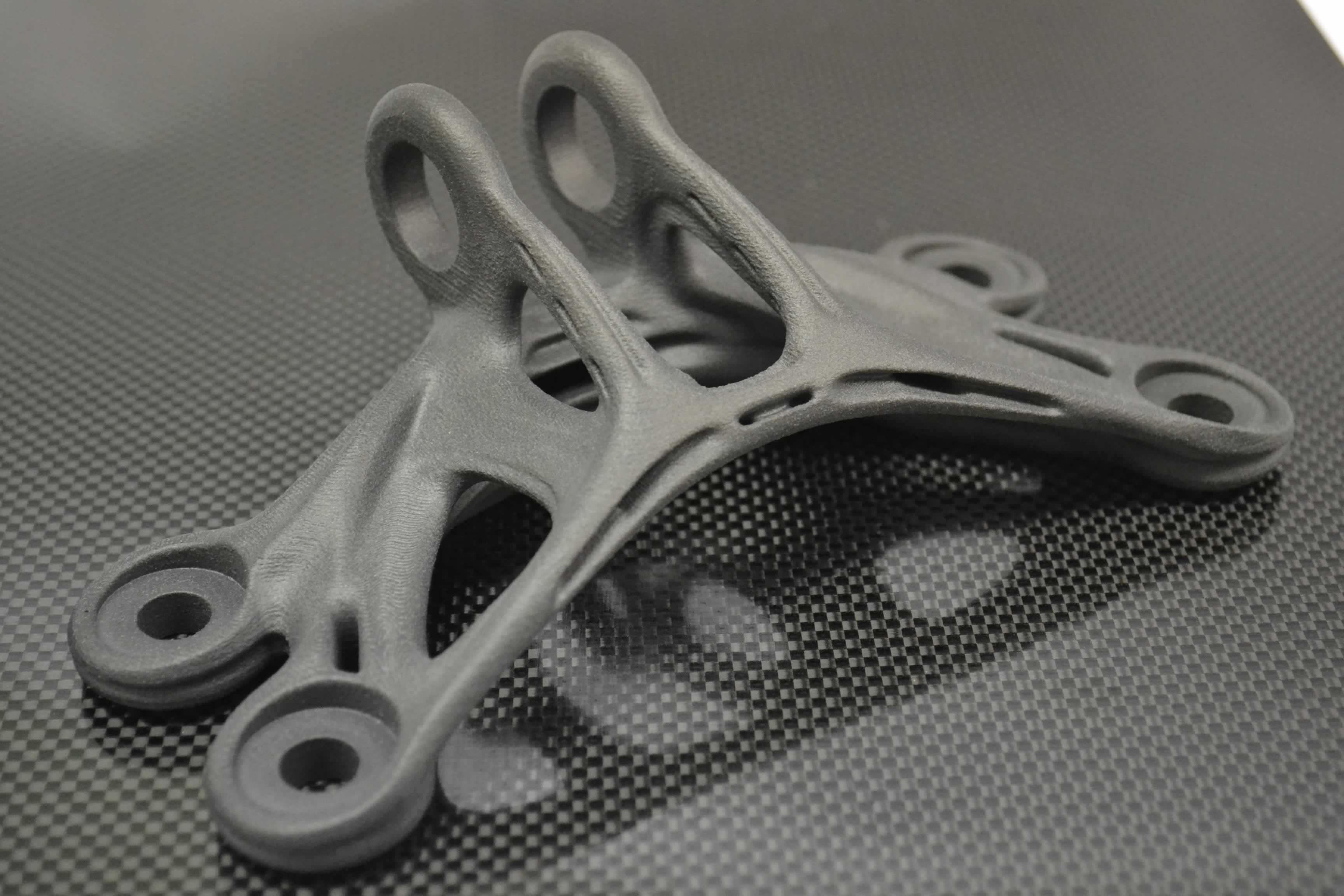Additive layer manufacturing
Formula One is often one of the earliest adopters of new technologies and materials, driven as it is by the teams’ perpetual search for any performance advantage. A prime example here is the commercial advent of additive layer manufacturing (ALM) more than a decade ago.
The original process is called SLA (Stereo Lithography Apparatus) and soon became known as Rapid Prototyping (RP). The early materials had limited stiffness and stability, so their applications were predominantly restricted to prototype production, but this did not prevent the technology offering solutions in Formula One. RP components found favour on wind tunnel models, where they deliver significant time savings over the carbon fibre composite parts, and their associated dependency on tooling, that were traditionally used.
These SLA parts were generally restricted to model underbody components, due to the limitations in their material properties, until around 2005 when ceramic-filled SLA became available. This offers greatly increased stiffness, and improved dimensional accuracy and stability. Combined with the increase in ALM machine-build volumes this has resulted in most carbon composite bodywork being replaced by SLA on current wind tunnel models.
These improved properties also provide alternative applications, with SLA-mould tools being used for laminating carbon fibre components. In 2010 the introduction of Fused Deposition Modelling (FDM) soluble materials opened up even greater opportunities. Here, soluble cores can be made using ALM, wrapped in carbon fibre pre-preg fabrics and cured in an autoclave. It is then simply a case of dissolving out the tooling core to leave the component.
This approach allows a design freedom to create complex integrated geometries that would be impractical or impossible to manufacture with conventional composite tooling methods. For example, ducting and pipe designs are no longer limited by the need to ensure that the component releases from the tooling, and the challenge of maintaining structural continuity across mould tool split lines is removed.
Although there has been widespread use of ALM in Formula One, SLA components have not been used directly in racecars. Unsurprisingly, given the importance of reliability, this technology has been adopted with caution. There is possibly a subconscious reluctance and scepticism to using plastics, which is a little ironic when considering the current predominance of polymer composites. However, this is not totally misplaced as it takes time to gain confidence in new technologies and materials, particularly if they are used in ‘mission critical’ systems.
The development of ALM has been rapid, with the evolution of different build technologies and materials offering engineers greater opportunities to use these processes. Selective Laser Sintering (SLS) is another mature process that offers greater strength and temperature resistance than SLA. The development of carbon-reinforced SLS materials in 2004, with their superior stiffness and strength-to-weight ratios, paved the way for ‘on-car’ applications. These days wings, ducts and brake caps are routinely manufactured using ALM Carbon-SLS.
It is not simply the accelerated ability to takes parts from concept to racetrack where these processes deliver a competitive advantage. Replacing a carbon composite part with Carbon-SLS presents real benefits when the design is optimised for the technology. By exploiting the freedom in design offered by additive manufacturing, components can be made more efficiently by integrating features and functionality such as cooling channels, bores, threads and cores.
Free from the constraints of conventional machining, finite element analysis and topology optimisation can be used to determine where the stresses in a component are and then place the minimum volume of material to withstand these loads. This results in component geometry that places material only where it is required and not a result of the physical or financial limitations of the manufacturing process.
The use of ALM in Formula One can only rise as continual development provides higher performance materials and greater manufacturing accuracy. New materials such as PEEK-HP3 boast fire and chemical resistance, and Direct Metal Laser Sintering (DMLS) processes using metallic alloys such as titanium promise multiple applications throughout the racecar.
However, as with the transition from aluminium to carbon composites in the early 1980s, it is vital to understand the material properties and limitations to deliver the greatest advantages. Perhaps to an even greater extent than with composites, ALM requires a change in engineering thinking to realise the full potential this technology has to offer.
 Fig. 1 - Carbon-SLS Brake Duct Bracket used in the brake duct assembly of a Formula One car (Courtesy of Graphite Additive Manufacturing and Andreas Anedda)
Fig. 1 - Carbon-SLS Brake Duct Bracket used in the brake duct assembly of a Formula One car (Courtesy of Graphite Additive Manufacturing and Andreas Anedda)
Written by Dan Fleetcroft